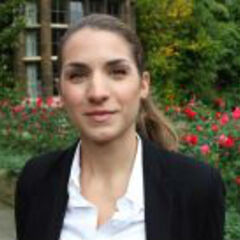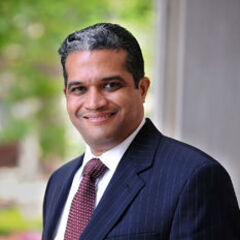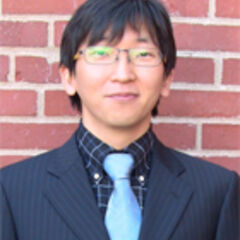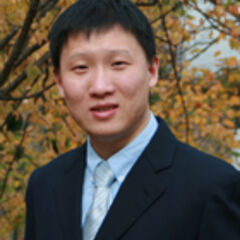News Archive 2014-2012
The laboratory was awarded a £1.2 mil project titled "Digitally Enabling the Design for Manufacture, Assembly and Maintenance of Bridges" together with Laing O'Rourke Llc, and Tony Gee and Partners
The consortium of Laing O'Rourke(LOR), Tony Gee and Partners, and the University of Cambridge (Dr Ioannis Brilakis and Prof Campbell Middleton) has been selected for an award of £1,2 mil for Digitally Enabling the Design for Manufacture, Assembly and Maintenance (DfMA) of Bridges by the UK Technology Strategy Board.
This grant is trying to address a major challenge in the infrastructure sector; the supply of bridges is not commoditised in the UK. Bridges are largely designed as bespoke solutions with the majority of the work being carried out on site. Moreover, workers are exposed to hazards since they have to work at elevated heights and spend time near high traffic volumes. When improving and/or replacing existing bridges, disruption through lane closures and detours is common. This project aims to tackle the problems above through an integrated digital delivery process for bridges and bridge parts that will address their whole lifecycle from identification and rationalisation of needs to manufacture, assembly, operation, maintenance and decommissioning. The output will be an interoperable set of digital tools, data schema and virtual prototyping processes that will lead to the automated manufacture of a set of standardised, validated parts and sub-assemblies at a controlled price, configured virtually, and in reality capable of meeting the requirements of the most common bridge types.
This will unlock and leverage the expertise in virtualizing and monitoring infrastructure of the CIT group and the investment made by LOR in Computer Aided Advanced Manufacturing through creation of a demand for offsite manufactured bridge parts and assemblies and allow digitally driven advanced manufacturing processes to be applied to bridge delivery. The project will provide a transformative change in the way we design, build, operate and decommission bridges, accelerate delivery and improve the industry’s safety record by moving significant amount of work off-site.
Submitted by Administrator on Tue, 09/09/2014 - 19:45
Stefania C. Radopoulou received the best paper award at the 21st International Workshop: Intelligent Computing in Engineering (EG-ICE 2014)
Stefania C. Radopoulou, PhD student at the CIT lab, and Dr Ioannis Brilakis, Laing O'Rourke Lecturer of Construction Engineering, were awarded the best paper award of the 21st International Workshop: Intelligent Computing in Engineering (EG-ICE2014) that was held on 16-18 July, in Cardiff, UK. The paper is entitled "Improving Patch Defect Detection using Vision Tracking on Video Data". It proposes a method for automatically detecting and tracking patches in surface pavement videos. This piece of work is part of a project towards the automation of pavement surface monitoring the results of which are of great interest to road owners and authorities responsible for pavement maintenance.
Submitted by Administrator on Wed, 08/13/2014 - 16:18
Iro Armeni, PhD student at the CIT Lab, was awarded an Onassis Foundation Scholarship

The Onassis scholarship is awarded each year to the top Greek students studying abroad in all disciplines by the Aristotelis Onassis Foundation, named after and founded by the famous Greek shipping tycoon of the last century.
Submitted by Administrator on Sat, 07/19/2014 - 00:10
Civil Engineering Division of the Engineering Department Ranked 4th worldwide
As a result of outstanding academic achievement and cutting-edge research by both staff and students of the University and Colleges, we are proud to announce that Civil Engineering Division of the Engineering Department Ranked took 4th place worldwide in the latest QS World University Rankings by subject and 3rd overall. QS Stars are grouped into eight categories: research, employability, teaching, infrastructure, internationalisation, innovation, engagement and the institution’s standing in specialist subjects. Cambridge has been rated 5 Stars based on 4 categories: Research, Teaching, Innovation and Specialist Criteria. The following criteria, basis for QS Star ratings, were selected as the key pillars of what makes a world-class university, taking in various factors that are often overlooked in university rankings and other assessments.
Key indicators considered here include domestic assessments of research quality, productivity (i.e. number of papers published), citations (i.e. how recognised and referred to those papers are by other academics) and awards (e.g. Nobel Prizes or Fields Medals). QS places large emphasis on institutions that is able to capture and nurture the finest minds of tomorrow while inspiring the next generation of potential research academics. These key indicators include domestic teaching quality assessments, collation of student feedback, national student surveys and student faculty ratios. Innovation, another key quality of a top institution measures the output activities and findings relevant to the economy, society and culture. Below is a recent comparison of the output by staff and researchers in the Civil Engineering Division of the Engineering Department Ranked:
CAMBRIDGE 2013 2014
Academic Reputation 73.00 78.10
Employer Reputation 87.70 100.00
Citations per paper 65.50 71.60
H-index Citations 65.90 76.60
Submitted by Administrator on Fri, 07/18/2014 - 23:22
Dr. Habib Fathi receives the Charles Eastman Top PhD Paper Award at the joint W078 / ICCCBE conference
Habib Fathi, PhD graduate of the CIT Lab, was awarded the Charles Eastman Top PhD Paper Award at the 2014 Computing in Civil and Building Engineering conference. According to the CIB W078 “This award, presented at each of W078's annual international conferences, recognizes the importance of developing top young researchers in the core field of W078, “the application of integrated IT throughout the lifecycle of the design, construction and occupancy of buildings and related facilities”. The award is named after a seminal researcher in this field who has, over his illustrious career, supervised and mentored many of the top researchers found across the world. Chuck Eastman's involvement in W078 dates back to 1988 with a keynote presentation and since then he and his students have been strong supporters of the annual series.”

The paper "Fathi, H. and Brilakis, I. (2014) "A Scale, Rotation, and Affine Invariant Line Detection and Matching Algorithm for 3D Reconstruction of Infrastructure", Proceedings of the 15th International Conference on Computing in Civil and Building Engineering joint with the 2014 CIB W78 Conference on IT in Construction, 23-25 June 2014, Orlando, FL, Pages 942 – 949" sets the foundations for automated reconstruction of civil infrastructure and describes perhaps the most definitive and robust method for detecting 3D lines in civil infrastructure scenes.
Submitted by Administrator on Tue, 07/01/2014 - 17:59
Seminar on geometric feature detection in images using a contrario theory
Geometric feature detection in images using a contrario theory
Presenter: Viorica Patraucean
Date: Tuesday 6th of May
Time: 14:40
Location: Sir Arthur Marshall Meeting Room
The main concern in designing geometric feature detectors in images is to obtain reliable results (i.e. reduced number of false detections) on various types of images without any parameter tuning. To achieve this goal, we propose an automatic procedure, having a twofold decision-making role: model validation and model selection. For a given set of pixels in a grayscale image, the detector decides if the set supports a feature (model validation), and identifies its type when multiple interpretations are possible (model selection). We describe discrete and continuous validation and model selection criteria based on the contrario theory.
Brief Biography: Viorica Patraucean completed her Ph.D. in January 2012, and now works as a postdoctoral researcher at INRIA Ecole Polytechnique, Paris. Her research with Pierre Gurdjos (INP Toulouse) and Maks Ovsjanikov (Ecole Polytechnique Paris) focuses on geometric feature detection in images and joint image and 3D shape analysis. Viorica holds an M.S. and Ph.D. degree in Computer Science from INP Toulouse and a B.S. degree in Computer Engineering from Military Technical Academy of Bucharest.
Submitted by Administrator on Fri, 05/02/2014 - 15:09
Professor Feniosky Peña-Mora is visiting Cambridge, as part of Royal Academy of Engineering "Distinguished Visiting Fellowship Scheme"
Distinguished Professor Feniosky Peña-mora is visiting Cambridge University from 24th to 28th of March. The theme of his visit is Advanced Construction Management and Methods. Professor Peña-mora has extensive expertise in this area. It is anticipated that Professor Pena-Mora will deliver two to three Master’s seminars approximately 2 hours each. This would involve a) overview of the academic background, b) innovative applications, and c) interactive exercise to engage the students. Potential seminar topics would involve collaboration, change management and conflict resolution in large-scale infrastructure projects. His input for the overall week’s theme would also be valuable.

Submitted by Administrator on Mon, 02/17/2014 - 03:56
Dr Ioannis Brilakis selected for ASCE 2013 Collingwood Prize
Dr Brilakis, Laing O'Rourke Lecturer of Construction Engineering and his former students, Zhenhua Zhu, Assistant Professor (Concordia University, Canada) and Stephanie German, Post-Doctoral Fellow (EPFL, Switzerland), are the recipients of the 2013 Collingwood Prize of the American Society of Civil Engineers for their paper titled "Visual Pattern Recognition Models for Remote Sensing of Civil Infrastructure", Journal of Computing in Civil Engineering, October, 2011. In selecting this paper for this prize, the committee particularly noted its contribution to engineering knowledge. The award will be presented during the ASCE's Annual Conference Leadership Breakfast, October 11, 2013 in Charlotte, NC.
This paper stemmed out of Dr. Brilakis' CAREER Award from the US National Science Foundation. It outlines his fundamental theory on how to create recognition models for civil infrastructure elements, such as columns, beams, walls, slabs, decks, etc. followed by example applications that have proven successful (see figure, recognized columns in video frames). The paper essentially formalizes the process of creating new Visual Pattern Recognition (VPR) models to simplify the steps needed to create each mathematical description and provide a set of common tools necessary for this purpose. This will automate the transformation of infrastructures' 3D surfaces into information rich, 3D element models with the help of machine vision. Brilakis said that this way, instead of manually recognizing each element every time it is encountered, we need only recognize its characteristics once and automatically detect it each subsequent time. This is analogous to defining an alphabet (letters = characteristics) so that this project will build the words (element models) and find them in a text (3D surface), instead of having to manually find the words in every text we encounter. The benefit comes from the ability to reuse the known letters (characteristics) and words (element models) every time we have a new text (3D surface).
The immediate advantage that will result from this work is the ability to automate the element recognition step of the "as-built" model generation process. The National Academy of Engineering recently listed "Restoring and Improving Urban Infrastructure" as one of the Grand Challenges of Engineering in the 21st century. Two of the greatest issues that cause this grand challenge are the need for more automation in construction, through advances in computer science and robotics, and the lack of viable methods to map and label existing infrastructure. Over two thirds of the effort needed to model even simple infrastructure is spent on manually converting surface data to a 3D model. The result is that as-built models are not produced for the vast majority of new construction and retrofit projects, which leads to rework and design changes that cost up to 10% of the installed costs. Any efforts towards automating the modelling process will increase the percentage of infrastructure projects being modelled and, considering that construction is a multi-trillion industry worldwide, each 1% of increase can lead up to billions in savings.
Submitted by Administrator on Sat, 11/02/2013 - 00:00
Abbas Rashidi and Jasmine Hines receive the best paper award at the 5th International Conference on Construction Engineering and Project Management (ICCEPM 2013)
Dr Ioannis Brilakis, Laing O'Rourke Lecturer of Construction Engineering, and his students Abbas Rashidi, PhD Candidate, and Jasmine Hines, undergraduate student, were awarded the best paper award of the 5th International Conference on Construction Engineering and Project Management (ICCEPM 2013).
The 5th International Conference on Construction Engineering and Project Management (ICCEPM-2013) was held on 9-11, January 2013 in Anaheim, California. The conference was co-sponsored by buildingSMART Korea, ASCE Construction Institute and California State University Fullerton. This event was a merging of ICCEM held by the Korean Institute of Construction Engineering and Management (KICEM) and ICCPM by the Nanyang Technological University of Singapore.
The paper is entitled "Distance Measurement in the AEC/FM Industry: An Overview on Technologies". It set the foundations for an ongoing research project which aims to automatically reconstruct and remodel the indoor built infrastructure by processing captured video clips. Results of the research are of great interest for finishing subcontractors, interior designers and furniture manufacturers to assist their customers to virtually design and model their homes and offices and choose the right finishes, appliances and furniture. The award was announced during the conference banquet and closing ceremony held on January 10th.
Submitted by Administrator on Thu, 01/10/2013 - 00:00
Dr. Park Appointed as an Assistant Professor at Myongji University, Seoul, South Korea

Dr. Park joined the CIT lab in January 2009 and obtained his Ph.D. degree in December 2012 with a thesis titled "Automated 3D Vision-Based Tracking of Construction Entities." In 2012, he received the Fiatech CETI (Celebration of Engineering & Technology Innovation) award in the field of Outstanding Student Research Project. Prior to joining the CIT lab, Dr. Park had been engaged in structural engineering. His M.S. degree in 2003 was in structural engineering at Seoul National University, followed by 4-year experience as a structural engineer at DONGIL Engineering Corporation
Submitted by Administrator on Thu, 12/20/2012 - 00:00
Dr. Fei Dai Appointed as Assistant Professor at West Virginia University, U.S.A.

Dr. Fei Dai obtained his PhD in Construction Engineering & Management from the Hong Kong Polytechnic University in July 2010. He received his training as a postdoctoral research fellow under the direction of Dr. Ioannis K. Brilakis in the Construction Information Technology Group at the Georgia Institute of Technology from November 2010 to July 2012.
Submitted by Administrator on Tue, 08/28/2012 - 00:00
